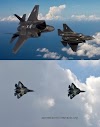Since the world witnessed the horrifying aftermath of Hiroshima and Nagasaki in 1945, the idea of nuclear war has loomed as one of humanity’s darkest fears. But few people today grasp just how far nuclear weapon technology has advanced since then. What once seemed unfathomable has now evolved into thermonuclear devices capable of destroying entire cities in seconds—and triggering long-term planetary consequences. In the modern geopolitical climate, where nuclear rhetoric resurfaces with alarming frequency, it becomes vital to understand the actual scale of these weapons. The question is no longer “Can a bomb destroy a city?”—but “How many cities can one bomb destroy?” This article breaks down the size, blast radius, radiation impact, and long-term devastation of today’s nuclear arsenal in a way that’s easy to understand—by comparing them to familiar places and scenarios.
From Hiroshima to Hydrogen
The Hiroshima bomb, “Little Boy,” had a yield of about 15 kilotons. That’s equivalent to 15,000 tons of TNT. It leveled over 60% of the city and killed more than 140,000 people. But by modern standards, this is considered small. Modern warheads—such as those carried by intercontinental ballistic missiles—range from 100 kilotons to over 50 megatons. The Soviet “Tsar Bomba” remains the largest ever detonated, with a 50-megaton yield—more than 3,000 times the size of Hiroshima.
How Big Is a Modern Nuclear Explosion?
A modern strategic warhead—like the U.S. W88 or Russia’s RS-28 Sarmat—can deliver a yield between 100 kilotons and several megatons. At ground zero, temperatures can exceed the surface of the sun, instantly vaporizing all matter. Within a 1–2 km radius, buildings collapse, fires erupt, and fatal burns affect nearly every living being.
For example: 1 Megaton Bomb (about 66× Hiroshima):
Total destruction radius: ~3.5 km
Severe blast damage: up to 10 km
Thermal radiation (third-degree burns): up to 14 km
Fallout spread: potentially hundreds of km, depending on wind
Now multiply that by the number of warheads in a typical nuclear submarine—around 24 missiles with 4–5 warheads each—and you begin to understand the annihilating scale of modern arsenals.
Radiation Fallout: The Long-Term Threat
Beyond the initial blast, nuclear fallout may be even more terrifying. Radioactive particles released into the atmosphere settle over time, contaminating air, water, and food. Fallout exposure can lead to:
Acute Radiation Sickness within hours or days
Cancer and birth defects for decades
Soil and water contamination that makes entire cities uninhabitable
Areas like Chernobyl and Fukushima, which suffered nuclear meltdowns (not explosions), remain largely abandoned—proving how long nuclear consequences can last.
City Comparisons: What If It Hit a Major Urban Center?
To visualize the damage, let’s apply a 1-megaton bomb to three major cities:
New York City:
Manhattan would be completely leveled. Thermal radiation would ignite fires across Brooklyn, the Bronx, and parts of New Jersey. Infrastructure collapse would cut off millions from aid.
London:
Central London would vanish. From Westminster to Canary Wharf, blast and firestorms would leave only ruins. Radiation would likely force the evacuation of much of southern England.
Delhi:
Densely packed areas would magnify casualties. Hospitals and emergency services would be overwhelmed or destroyed. Monsoon winds could spread fallout deep into surrounding regions.
Such simulations make it clear: a single nuclear detonation in a populous city could result in millions of deaths and generations of suffering.
Hydrogen Bombs vs Atomic Bombs
There are two main types of nuclear bombs:
Atomic bombs (fission): Use uranium or plutonium to create an explosive chain reaction. These were the type used in WWII.
Hydrogen bombs (thermonuclear): Use a fission bomb to trigger a fusion reaction—combining hydrogen isotopes at extreme pressure and temperature. These are hundreds to thousands of times more powerful.
Example:
Hiroshima Bomb = 15 kilotons
Tsar Bomba (USSR, 1961) = 50 megatons
That’s over 3,300× more powerful.
Today’s active warheads are smaller than Tsar Bomba (for strategic reasons), but still vastly more destructive than those dropped in WWII.
Global Stockpiles and the Doomsday Scenario
As of 2025, the global nuclear arsenal includes:
Russia: ~5,889 warheads
United States: ~5,244 warheads
China, UK, France, India, Pakistan, North Korea, Israel: thousands more combined
The Doomsday Clock, maintained by the Bulletin of the Atomic Scientists, currently sits at 90 seconds to midnight, its closest ever to global catastrophe—largely due to nuclear tensions.
Even a "limited" exchange—such as between India and Pakistan—could kill 100 million people instantly, trigger nuclear winter, and cause global crop failures.
Can Anyone Survive a Nuclear War?
Survival depends heavily on:
Distance from Ground Zero
Immediate Shelter (preferably underground)
Time in Shelter (first 48–72 hours are most dangerous for fallout)
Access to Clean Food & Water
Some tips:
Duck and cover still works to reduce exposure to the initial blast
Stay inside for 72 hours minimum to avoid radiation
Use potassium iodide to reduce radioactive iodine absorption
That said, in many urban strike scenarios, survival odds are extremely low—making prevention the only viable strategy.
The Politics of Nuclear Deterrence
Despite these terrifying facts, nations continue to build and modernize nuclear arsenals. Why?
Deterrence: The threat of mutual destruction is believed to prevent war.
Prestige and power projection
Insurance against regime change or invasion
However, accidents, false alarms, and human error have nearly triggered Armageddon multiple times—most famously during the Cuban Missile Crisis and the 1983 Soviet nuclear false alert incident.
In conclusion, the scale of nuclear weapons goes beyond war. These are planetary weapons, and even a single detonation could reshape the course of human history. Understanding their size, their consequences, and their presence in today’s geopolitical landscape is essential—not to spread fear, but to build awareness and push for diplomacy, de-escalation, and disarmament.






0 Comments